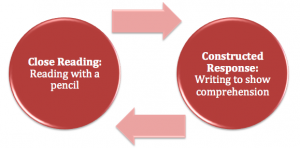Reflect on a moment in your life when you walked into a new environment for the first time. Any number of events might spring to mind—entering your high school cafeteria as a freshman, attending your first college course, or the first day you began a new job. As you take this trip down memory lane, try to recall any feelings you had in that particular moment.
Discomfort. Uncertainty. Confusion. Embarrassment. These are emotions that many English Language Learners feel on a daily basis in our classrooms. What can we, as educators, do to make them feel more comfortable in the learning environment? In his book, Explorations in Language Acquisition, Dr. Stephen Krashen explains that when an English learner feels anxious about her surroundings, a block (termed the ‘affective filter’) may prevent her from understanding the language and the content of a lesson (2003). One way we can decrease ELLs’ unease is by having a well-managed classroom.
According to Dr. Jacqueline Ancess from Columbia University, “Classroom management is setting up an orderly and safe space where kids can learn what you want them to learn (2011).”
Here are 3 tips for effective classroom management.
1. Teach, Review, and Monitor Classroom Rules
The essential purpose of classroom rules should be to keep all members of the learning community safe. They are meant to protect students’ feelings, physical bodies, and their right to learn. When creating rules, we should try to limit the number to five or fewer. We also need to use positives rather than negatives (Wong, 1991). Examples might include:
- Be respectful.
- Be responsible.
- Be safe.
For ELLs and native English speakers alike, it is critical that we explicitly teach the rules. If we are asking students to be respectful, what should this look like? What sort of language should students use when talking with peers or with adults? One effective technique for teaching rules is to use classroom scenarios with modeling to demonstrate how we would like students to act, talk, and move.
The most effective classroom managers know that they need to monitor students on a daily basis to ensure that they are adhering to the rules. Rules should also be revisited and reviewed after schools breaks. We also need to display the rules in an easily viewed location. For ELLs at lower language levels, consider using visuals alongside the written rules.
2. Teach, Review and Monitor Classroom Procedures
Procedures differ from rules in that they are meant to help a classroom function in an organized manner. Procedures include things like how students should enter and exit a class, how they should pass in assignments, or what to do if they need to leave to go to the restroom. When introducing the difference between rules and procedures, it may be helpful to talk with students about procedures like how to make a phone call or how to get on and off of an elevator. For a more complete list of suggested procedures to teach and have in place, click here.
Like classroom rules, it is important to model and review them on a regular basis. Students will only follow procedures if we set the expectation that they do so. For example, if a group does not enter the class in the manner we envision, we should practice this procedure until they understand that there is only one acceptable way to do so.
Check out the videos below for examples of how to teach and use some procedures in your classroom.
Entering the classroom
Seating procedure
Starting with a Do Now
3. Use an Effective Attention Signal
In all classes we teach, there are times when we need to get our students’ attention. Explaining and consistently using a specific signal lets students know that we have something important to share with them. Students should know that all movement and conversation ceases when the signal is used. We should refrain from giving any directions until all students are quiet and focused. English learners, in particular, need to be in an environment where they can see and hear the messages we are delivering.
Check out the video below for an example of how to teach and use an attention signal.
Attention Getting Signal
Sources:
Knight, J. (2013). High-impact instruction: a framework for great teaching. Thousand Oaks: Corwin.
Krashen, S. D. (2003). Explorations in language acquisition and use: the Taipei lectures. Portsmouth, N.H.: Heinemann.
New Teacher Survival Guide: Classroom Management. (n.d.). Teaching Channel. Retrieved February 20, 2014, from https://www.teachingchannel.org/videos/new-teacher-classroom-management
Sprick, R., Reinke, W., Knight, J., & McKale, T. (2006). Coaching Classroom Managment. Eugene: Pacific Northwest Publishing.
Wong, H. K., & Wong, R. T. (1998). The first days of school: how to be an effective teacher ([2nd ed.). Mountainview, CA: Harry K. Wong Publications.


 This session discussed the strategy of Close Reading, composing Text Dependent Questions from that close reading experience and formulating Constructed Responses to demonstrate comprehension through writing. We also shared Tools for Readers Who Struggle and reviewed some of the supports available in that collection.
This session discussed the strategy of Close Reading, composing Text Dependent Questions from that close reading experience and formulating Constructed Responses to demonstrate comprehension through writing. We also shared Tools for Readers Who Struggle and reviewed some of the supports available in that collection.